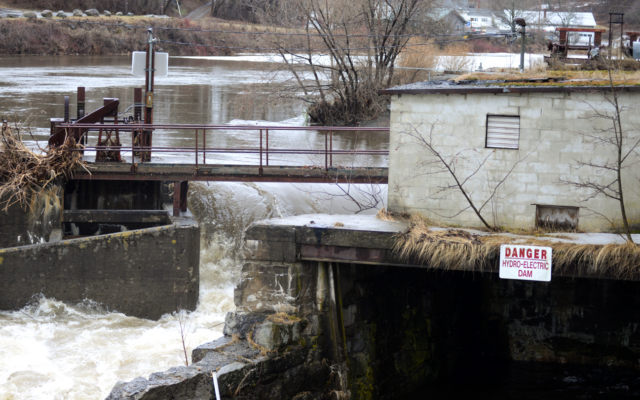
Dover-Foxcroft residents will have to pay to repair dam if they reject removal
DOVER-FOXCROFT — Dover-Foxcroft residents will vote in June on whether to remove the historic Mayo Mill dam and build a riverfront park. If they don’t approve that plan, they’ll be on hook for the $6 million to $8 million cost to repair it.
Residents grappling with how dam removal could alter the town’s identity now have concrete language to consider after Dover-Foxcroft Select Board on March 25 unanimously approved the warrant article as it will appear on the June 11 ballot.
“We thought it was important so people don’t act simply on emotions because they like the view [of the dam] and then realize they voted in favor of an $8 million tax increase,” said Thomas Lizotte, the board’s chairperson. “If you want to keep the dam, which we believe serves zero purpose for the community, it’s going to be costly.”
A town committee partnered with the Atlantic Salmon Federation, the Nature Conservancy in Maine and Inter-Fluve in 2022 to find a solution to the aging dam and connected facilities.
In January, the committee issued an extensive report recommending dam removal and landscaping to create a park downtown, which is estimated to cost $20 million. The report cites reducing flooding dangers, improving fish passage and the availability of funding to remove dams as reasons for the recommendation.
The Dover-Foxcroft Select Board in late February voted 6-1 to accept the recommendation and send the issue, which has proven to be controversial, to voters this summer.
On June 11, voters will be asked whether the town authorizes the board to enter an agreement with the Atlantic Salmon Federation, the Nature Conservancy and others for removal of the dam by using funds secured by those organizations and not local taxes. Construction to remove the dam is estimated to cost $6,308,500, according to the article.
The article also asks about initiating a plan for a restored riverfront, including “enhancements to support economic and recreational opportunities for the downtown as well as opportunities for historic preservation.” Lastly, it seeks to secure non-taxpayer funding to make riverfront improvements based on the plan, which are estimated to cost $6 million.
A note explaining the differences between a “Yes” or “No” vote will also appear on the ballot.
Voting “Yes” means the town would work with its partners to secure grant funding to remove the dam and develop a plan to restore the riverfront. “No” means the town will need taxpayer money to fund studies, permitting and repair costs for the dam. Repairing the dam alone is estimated to cost from $6 million to $8 million, according to the article.
The language was modeled after a similar question in Farmington, Lizotte said. The town removed its dam and replaced it with a park that opened to the public last year.
There will be a few chances for residents to learn about the dam project before the referendum, including the annual town meeting at 9 a.m. April 27 and a public hearing that will be scheduled at a later date, he said.